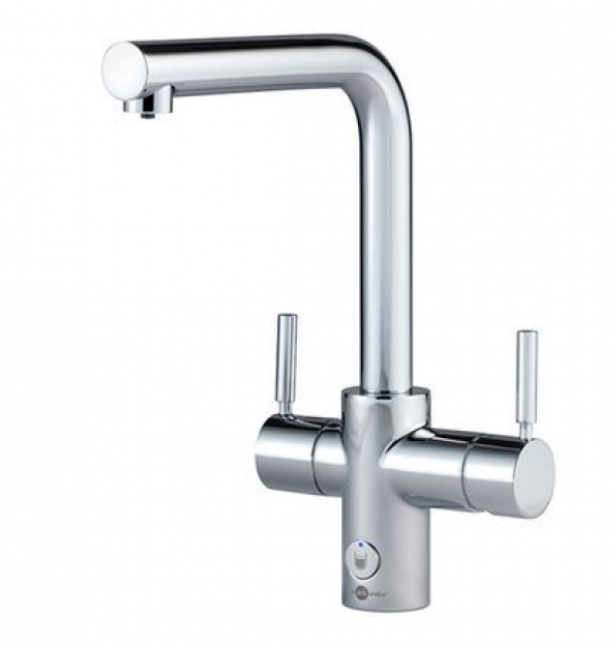Do you ever wonder how Shein, the popular online fashion retailer, manages to offer such low prices? You’re not alone. Many people are curious about how Shein can sell trendy clothing and accessories at prices that seem too good to be true.
But the mystery of Shein’s affordability is not unsolvable. In this article, we will explore the business model, supply chain, marketing strategies, and ethical concerns surrounding Shein to shed light on why the brand is so cheap.
Firstly, we will examine how Shein’s business model allows for low prices. From the way they source materials to their efficient production processes, Shein has created a system that prioritizes affordability without sacrificing quality or style.
We will also delve into the supply chain of Shein, which involves working directly with manufacturers, to understand how this affects the cost of their products.
So, if you’re curious about how Shein can offer such low prices and want to know if there are any ethical concerns to consider, keep reading.
The Business Model of Shein
So, you’re probably wondering how Shein manages to offer such cheap prices – well, it all comes down to their unique business model.
Shein is an online fast fashion retailer that operates on a direct-to-consumer model. This means that they cut out the middleman and sell their products directly to the customer, which allows them to keep their prices low.
Additionally, Shein has a highly efficient supply chain and manufacturing process. They have a team of in-house designers who create new designs daily, which are then sent to their manufacturing facilities in China. By having their own manufacturing facilities, they are able to produce the clothes quickly and at a lower cost.
This, coupled with their use of inexpensive fabrics and materials, allows Shein to produce trendy and affordable clothing at lightning-fast speeds.
The Supply Chain of Shein
You may be interested to know that the supply chain of Shein plays a significant role in the affordability of their products. Unlike traditional fashion brands, Shein has a fast and efficient supply chain that allows them to quickly produce and ship their products. This is made possible through their use of technology and data analysis to predict the latest fashion trends and consumer demand.
Shein also sources their materials and labor from countries with lower production costs, such as China and Bangladesh. While this has been criticized for its potential exploitation of workers, it does allow Shein to keep their prices low and compete with other fast fashion brands.
However, it is important to note that the true cost of these low prices may come at the expense of ethical and sustainable practices in their supply chain.
The Marketing Strategies of Shein
Take a look at how Shein uses social media influencers and targeted advertising to reach their target audience and create a buzz around their latest fashion collections.
Shein collaborates with micro-influencers who have a smaller but more engaged audience, as well as macro-influencers who have a larger following. These influencers create content featuring Shein products and share it with their followers, which helps increase brand awareness and drive sales.
Shein also uses targeted advertising to reach potential customers who have shown an interest in similar fashion brands or products. They use data analytics to identify these individuals and display ads on their social media feeds.
In addition to influencer collaborations and targeted advertising, Shein also uses user-generated content to promote their brand. They encourage customers to share their Shein outfits on social media using specific hashtags, and then feature this content on their own social media channels. This creates a sense of community and encourages customers to engage with the brand.
Overall, Shein’s marketing strategies are focused on creating a strong online presence and engaging with their target audience through various digital channels.
The Low Prices of Shein
It’s hard not to notice how everything on Shein’s website is priced so affordably, making it easy to fill your shopping cart with trendy clothing without breaking the bank.
But how does Shein manage to offer such low prices on their products? The answer lies in their business model.
Shein keeps their prices low by cutting out the middlemen and selling directly to consumers. They also have a fast fashion model, which means that they are constantly producing new designs and styles in small quantities, reducing the costs of unsold inventory.
Additionally, Shein sources their materials and labor from countries with lower production costs, allowing them to keep their prices competitive. While the low prices may seem too good to be true, Shein’s efficient business model allows them to offer affordable and trendy clothing to their customers.
Ethical Concerns Surrounding Shein
Now, if you’re someone who cares about ethical fashion practices, you may want to know more about the concerns surrounding Shein’s production methods.
Shein has been criticized for its fast fashion business model, which involves producing trendy clothes quickly and cheaply, often at the expense of the environment and workers’ rights. The brand has been accused of using sweatshops and exploiting workers in countries like China and Bangladesh.
Moreover, Shein has been called out for its lack of transparency when it comes to its production processes. The brand does not disclose its suppliers or factories, making it difficult to trace the origin of their clothes and ensure that they are produced ethically.
While Shein claims to have ethical and sustainable practices, the lack of transparency raises questions about the validity of these claims. As a conscious consumer, it’s important to consider these ethical concerns before making a purchase.
Labor Practices of Shein
You may be shocked to learn about the labor practices behind Shein’s trendy clothes, leaving you feeling uneasy about supporting a brand that may be exploiting workers in order to produce their fashion items.
Shein has faced criticism from various sources about their labor practices in the past. There have been reports of poor working conditions, low wages, and long working hours in the factories that produce Shein’s clothes.
Furthermore, some of the factories that Shein sources from have been accused of using forced labor, particularly in Xinjiang, China. This has led to calls for a boycott of Shein and other brands that rely on these factories.
While Shein has denied any involvement in forced labor and claims to have a strict code of conduct for its suppliers, the company’s lack of transparency makes it difficult to verify these claims.
As a consumer, it’s important to be aware of the labor practices behind the brands we support and to make informed decisions about where we spend our money.
Environmental Impact of Shein
Imagine yourself standing in a landfill, surrounded by heaps of discarded clothes, many of which were purchased from fast fashion brands like Shein, whose environmental impact is staggering.
The fashion industry is the second largest polluter in the world, and Shein’s fast fashion model contributes greatly to this problem. Shein’s low prices come at a high cost to the environment, with the production of their clothes leading to massive amounts of water pollution, greenhouse gas emissions, and textile waste.
Shein’s manufacturing process is notorious for its high levels of pollution. The company uses an enormous amount of water in the production of their clothes, with some estimates suggesting that it takes up to 1800 gallons of water to produce just one pair of jeans. This water is often contaminated with harmful chemicals, which can lead to health problems for nearby communities and damage to local ecosystems.
Additionally, Shein’s fast fashion model encourages consumers to buy more clothes than they need, leading to an overabundance of textile waste that ends up in landfills. As consumers, it’s important to consider the environmental impact of our purchases, and to support companies that prioritize sustainability over profit.
Frequently Asked Questions
What is the history of Shein and how did it become so successful?
To answer your question, Shein was founded in 2008 by a group of fashion enthusiasts who wanted to provide trendy and affordable clothing to young women around the world.
The company quickly gained popularity due to its fast fashion business model that allowed them to produce and ship new designs quickly and efficiently.
Shein’s success can also be attributed to its strong social media presence and influencer partnerships, which helped the brand gain traction with younger audiences.
Today, Shein is a global e-commerce giant that offers a wide range of fashion products at incredibly low prices, making it a go-to destination for budget-conscious shoppers.
How are Shein’s clothes made and what materials are used?
When it comes to the materials used in Shein’s clothing, the brand primarily uses synthetic fabrics such as polyester, rayon, and nylon. These materials are less expensive than natural fibers like cotton or wool and can be produced quickly in large quantities.
Shein also uses a combination of machine and manual labor to produce their garments, which allows for faster production times and lower labor costs. However, it’s important to note that the use of synthetic materials can have negative impacts on the environment, and Shein has faced criticism for their fast fashion practices.
How does Shein handle customer service and returns?
When it comes to customer service and returns, Shein has a team dedicated to handling these issues. If you have a problem with an order, you can contact their customer service through email or chat. They typically respond within 24 hours and will work with you to find a solution.
As for returns, Shein has a 30-day return policy for most items. You can initiate a return through their website and they will provide you with a prepaid shipping label. Once they receive your return, they will issue a refund or exchange.
Overall, Shein appears to have a solid customer service and return policy in place to address any issues that may arise.
What is the target demographic for Shein’s products?
You may be wondering who Shein’s target demographic is. The brand caters to young women who enjoy staying up-to-date with current fashion trends but don’t want to break the bank. Shein offers a wide range of clothing options, from casual to formal wear, and even swimwear and accessories, all at affordable prices.
Their sizes also cater to a wide range of body types, making the brand inclusive to all women. Shein’s marketing campaigns often feature social media influencers and models who embody the brand’s youthful and trendy aesthetic.
How does Shein compare to other fast fashion companies in terms of pricing and practices?
When comparing Shein to other fast fashion companies, it’s clear that their pricing is significantly lower. This can be attributed to their business model, which prioritizes speed and efficiency in manufacturing, as well as their emphasis on direct-to-consumer sales.
However, this also raises concerns about their labor practices and environmental impact. While Shein has made efforts to improve in these areas, it’s important to consider the true cost of their low prices.
Conclusion
So, now that you understand Shein’s business model, supply chain, marketing strategies, and low prices, you may be wondering whether it’s worth buying from them.
The truth is that it’s up to you to decide. While Shein’s prices are undeniably low, there are ethical concerns surrounding their labor practices and environmental impact.
If you choose to shop at Shein, make sure to do your research and make informed decisions. Look for items made from sustainable materials and consider the impact on workers in the supply chain.
And if you decide that Shein isn’t for you, there are plenty of other options out there that prioritize ethical and sustainable practices.
The choice is yours.



